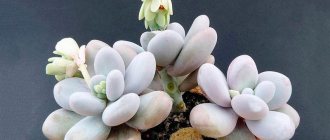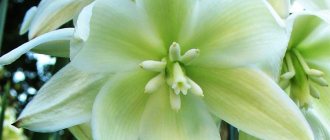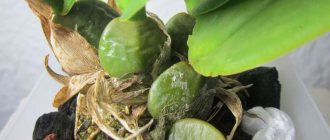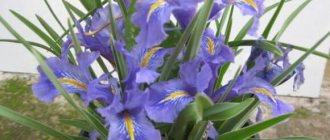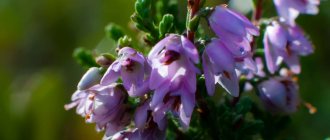Every gardener grows various flowers in his flower beds: perennials, annuals, tuberous, bulbous. They fill gardens with rich fragrance and bright colors. When thinking through the design of a garden flowerbed, special attention should be paid to chrysanthemums. They will decorate any flower garden in the fall with their abundance of bright colors. It is worth noting right away that chrysanthemums are quite capricious to grow. But if everything is done correctly, they will delight gardeners with abundant flowering until the first frost.
Varieties and varieties of chrysanthemums
This is a flower with an interesting history. To this day, debates continue about where it came from. A definite opinion is that this is an overseas miracle, possibly arriving from Japan or China.
Knowledgeable people say that garden (bush) perennial chrysanthemums require competent planting and care. Both in the garden and in home pots, many factors will influence the beauty of the flower.
Garden chrysanthemum can be miniature (10-15 cm) and very tall - up to two meters. This perennial plant was combined into groups according to certain characteristics and characteristics.
Garden chrysanthemums - a fabulous guest from the Middle Kingdom
It is no coincidence that they are called “optimist flowers.” It is enough to see a luxurious bouquet of chrysanthemums, breathe in the aroma and touch the petals to instantly lift your spirits.
Bouquet of chrysanthemums
Initially the culture was called Chrysanthemum, but later it was replaced by another name Dendronthema. Relatively recently, a third name has come into use - perennial garden chrysanthemum. There are many classifications according to the degree of decorativeness, colors and sizes, and flowering time. Some flowers are specially grown for cutting - they are perfect for creating bouquets. They are resistant to even the most unfavorable conditions. The plant may have a single stem or grow as a bush crop. The bush chrysanthemum is very lush and takes up much more space.
The height of the stems is limited to a very wide range - from 15 to 150 centimeters. This feature allows you to use various varieties of garden chrysanthemums and actively cultivate perennial varieties.
Despite its widespread distribution, unpretentiousness and quick adaptability to any living conditions, the birthplace of the culture is China and Manchuria. Even today, people in Asian countries treat it like a relic. As a result of carefully thought-out breeding work, it was possible to create tens of thousands of varieties and varieties of chrysanthemums. Consumer performance and appearance have improved significantly. Perennial garden chrysanthemums, the varieties of which we will discuss below, have learned to withstand the frosts of Siberia and dry summers. By the way, with a sufficiently thick layer of snow, they can easily withstand winter and do not require additional covering.
Inflorescence sizes
Usually the flowers themselves catch the eye, not only by their number on the bush, but also by the color and size of the inflorescence. Perennial chrysanthemums are divided into three groups according to flower size:
- Small-flowered. They are called Korean. Such plants can be double or simple. One bush is decorated with many flowers with a diameter of 2-10 cm. The height of the bush is from 30 to 120 cm. The shape of the leaves resembles oak leaves. Plants are frost-resistant and not picky about soil composition. The appearance of the first flowers pleases the eye already in early September and until frost.
- Gray-flowered. They are also called decorative. They are grown both for garden decoration and for cutting. Perfectly adaptable to growing in pots at home. They look great on terraces and will decorate any balcony or loggia. The bushes grow up to 30-70 cm, and the diameter of the inflorescences is from 10-18 cm.
- Large-flowered. These are Indian plants, they are tall and look impressive. There is a large flower on a long stem about 80-120 cm high; its diameter can exceed 25 cm. This species is more delicate and does not tolerate frost. It is grown in greenhouses for bouquets.
Most people have cold-resistant chrysanthemums growing on their plots; they are popularly called oaks - this is a small bush chrysanthemum. Flowers are very unpretentious and can boast of their varied palette, as well as shape and size. Depending on the variety, they will bloom from 20 to 60 days, all of them are beautiful in their own way. Few people will be indifferent to such a gorgeous gift from nature.
Description of the plant
Chrysanthemums are herbaceous perennials or subshrubs. There are several hundred species, and even more varieties. Their flowers are small, reed-shaped, tubular. They form standard basket inflorescences, which differ in size, shape and arrangement of tiers. The flowers themselves are simple, semi-double, double.
Advantages of growing chrysanthemums in a summer cottage
The benefits of chrysanthemums include:
- a large selection of varieties and species, which allows summer residents to choose the best option for themselves, which will harmoniously fit into the flower garden. They are planted solo, in groups, in mixborders;
- long flowering period from July to November;
- the presence of beautiful and bright inflorescences that delight owners in all weather conditions;
- ease of reproduction;
- resistance to diseases and pests;
Important : chrysanthemums can withstand various negative environmental factors: heavy rains, sudden temperature changes, lack of sunlight, drought.
Height and shape of the bush
When the leaves have already fallen in the fall, the soil in the garden is gray, and among the dull landscape you can see a green bush with bright flowers - it’s amazing. Based on the shape and size of the bush, plants are divided into three groups, each of which has a huge number of varieties.
- Tall. Very tall stems are supported with a frame in the form of pegs or metal mesh; they are installed immediately during planting of the bushes. Growing up, tall flowers planted in a group turn into a picturesque hedge.
- Medium height. Such bushes look good in flower beds, near fences and in gazebos.
- Borders. Small bushes no higher than 30 cm long. The most beloved and beautiful variety of spray chrysanthemum. The bushes grow in the form of a ball, generously strewn with flowers.
The beautifully flowering plant is one of the first to appear in the spring, although the flower itself blooms only in the fall. Small silvered leaves on the bushes will decorate any flower bed.
Application in landscape design
Many people are interested in where to plant chrysanthemums on the site? This can be done solo, in small groups, in mixborders, or as borders. The main thing when planting them:
- take into account the height of the bushes;
- calculate the timing of flowering;
- choose beautiful color combinations.
Attention: chrysanthemum flower beds combined in height look interesting and original. Tall plants are planted in the background, medium ones in the middle, and low ones at the very edge.
We looked at how to properly plant a chrysanthemum on a site in the spring, what care it needs to provide, and what other plants it combines with. If you follow all the recommendations of experienced gardeners, you can make really bright and unique flower beds that will decorate your area with a riot of colors from the beginning of summer until the first severe frost.
Shape of flowers
If you look closely at the inflorescences, you will notice that they are all different in shape. There are five different types of flower shapes in total:
- In the form of pompoms. The petals of the flower are collected in the shape of a ball and resemble a pom-pom.
- Anemoids. Small flowers similar to anemones. In them, large petals are collected in one, two or three rows at once.
- Single-row and double-row inflorescences, framed by flowers, like tongues, in the middle of which there are small flowers in the form of tubes. The border of petals can be arranged in two rows.
- The flowers consist of three rows of petals arranged around a central one, appearing semi-double.
- Double with lush flowers, very similar to semi-double, different in appearance and shape.
Chrysanthemum is a southern plant, and not many species have adapted to the conditions of the central Russian climate.
Pest and disease control
Caring for chrysanthemums in the garden comes down not only to watering, pruning and feeding them, but also to fighting diseases and pests.
Diseases
These flowers are afraid of diseases:
- powdery mildew;
- rust;
- white rust;
- septoria leaf blight;
- sclerotinia sclerotiformes;
- verticillium wilt;
- bacterial rot;
- gray mold.
Pests
When growing and caring for chrysanthemums in the country, it is worth keeping in mind that they are subject to attack:
- leaf nematode;
- aphids;
- spider mite;
- unsegmented worms.
Landing Features
Large-flowered varieties grow better where it is warm or in greenhouses; hardy Korean chrysanthemums can be severely damaged by frost in a winter without snow. There must be drainage in the soil. Garden perennial bush chrysanthemum does not like wet wintering. Planting and care require special attention, since the bushes are short-lived and should be renewed every three years.
Soil preparation
In open ground, species adapted for frosty winters grow safely - these are zoned varieties grown from seeds; they winter well, and then grow and bloom.
Before planting, you should choose a location. Flowers do not like shade, otherwise the plant will reach for the sun and will not have the strength to bloom. The area should be windless and moderately damp, without stagnant water. The soil for bush chrysanthemum must meet certain requirements:
- Soft fluffy soil should not contain clay; any mechanical composition will be suitable.
- Good air and water circulation is required.
- Peat and fertilizers are added to the planting hole to make the soil slightly acidic and fertile.
For digging, 20 kg of humus, 30 g of urea and 100 g of superphosphate are introduced per square meter. If there is heavy soil, sand is sprinkled for drainage. It is forbidden to add fresh manure under chrysanthemums.
Recommendations for planting
Chrysanthemums are sold in pots in the fall so you can see how they bloom and what species they belong to. Having purchased a flower you like, you should replant it. But how to plant bush chrysanthemums? It is better not to do this in the fall. The flower devotes all its energy to flowering, but does not have any left for rooting, so the bush may not survive in winter. It is better for it to remain in the pot and overwinter in the basement or cellar. In spring (this is the best time to plant chrysanthemums), you should choose a place and plant a flower there.
The best months are the end of April and May (southern regions), and in regions further north you should wait for the final warming without frost.
It is advisable to plant bush chrysanthemum as follows:
- Sand or drainage in the form of pebbles should be added to each hole.
- Large bushes are planted at a distance of half a meter from each other, small ones - 25-30 cm. There should be 50 cm between rows.
- Avoid deep digging into the soil.
- Tall bushes need additional support; it should be installed immediately and the plants should be tied up.
- For better adaptation, it won’t hurt to spray the flower leaves with Epin.
- When waiting for frost, the bush is covered with non-woven material.
Proper flower care will ensure good flowering and health of chrysanthemums.
How to feed chrysanthemums
If you follow the agricultural techniques for growing the flower “queens” of autumn gardens, they grow quickly. By summer, a large bush develops from a small, inconspicuous cutting, and by autumn it already manages to please us with abundant flowering and goes into a dormant state. With such accelerated development, frequent feeding becomes a necessity. There should be at least three of them over the summer.
The first time the chrysanthemum needs to be fed until mid-June, that is, even before the buds form on the plant. It will help the bush grow green mass. The fertilizer can be prepared from the following ingredients:
- 10 liters of settled water;
- 1 tbsp. spoon of nitrophoska;
- 1 liter of liquid mullein.
Before fertilizing, the bushes need to be watered thoroughly and wait for moisture to be absorbed into the soil. Then about 1 liter of nutrient solution is added to each plant.
The second time chrysanthemums are fed during the bud setting period, from the second ten days of July to the second ten days of August. A more precise date depends on the specific flowering time of each species. For the second feeding you can take:
- 10 liters of water;
- 1 tbsp. a spoonful of superphosphate;
- 1 tbsp. a spoonful of potassium sulfate.
It is carried out in the same way: about 1 liter of nutrient solution is poured under each bush, the soil is pre-moistened.
The third time, fertilizing is carried out at the height of abundant flowering. It is prepared as follows:
- 10 liters of water;
- 1 tbsp. spoon of potassium sulfate.
Otherwise everything is the same. The earth is pre-watered abundantly. Apply 1 liter of liquid fertilizer to each bush.
Fertilizer is best applied at dawn or late in the evening after the sun has set. Care must be taken to ensure that the nutrient liquid does not get on the flowers and leaves, as the chemicals it contains will cause them to burn.
To ensure that as many buds as possible form on the chrysanthemum, it blooms faster, and the flowering is friendly, before they begin to swell, the bushes are sprayed with a growth stimulator Bud for rapid flowering at the rate of 10 g of stimulant per 10 liters of settled water. To spray 10-15 plants you will need 1 liter of this solution. You can also use Bon forte fertilizer for roses and bush chrysanthemums.
Planting chrysanthemums in autumn
If you can’t wait until spring, then you should strictly adhere to some recommendations so that the flower does not die in the cold:
- The best time to plant a flower is the end of September or the first half of October.
- You should wait until the bushes have flowered, otherwise there is a high probability that they will not be accepted.
- For planting, it is better to give preference to bushes on which basal shoots are already visible.
- Planted before frost so that the seedlings can gain strength to withstand the cold.
- Be sure to fertilize the soil with peat or compost, cover and insulate the bush before frost.
By applying such simple manipulations, you will have hope that next year the chrysanthemums will delight you with their blooms.
Top dressing
Chrysanthemum needs mineral and organic fertilizer. In the first half of the growing season, the plant is fed with mineral fertilizers with a high nitrogen content; in the second half, phosphorus and potassium should predominate. Dissolve 40 g of fertilizer in 10 liters of water. For 2 sq. m of landings this should be enough.
Be sure to feed the bush chrysanthemum 3 times a season with an infusion of cow manure in a ratio of 1:10. You will need 1 liter of solution per bush. It should be borne in mind that all fertilizers are carefully combined with watering. Afterwards the soil is loosened.
How to care?
Chrysanthemum is very moisture-loving, so the plant needs to be watered abundantly before flowering. It’s better to use soft water: rain or settled water. With a lack of water, the stems of chrysanthemums become coarser, and the leaves and flowers look less attractive. Chrysanthemum loves organic matter and complex mineral fertilizers. At the beginning of cultivation, when young chrysanthemums are actively growing new shoots, it is better to use nitrogen fertilizers. And then the plants need phosphorus and potassium for better flowering.
We water chrysanthemums with a fertilizer solution only at the root: if it gets on the leaves, it will cause a burn. Nitrogen promotes plant growth, an increase in the number of shoots and the size of flowers, the intensity of the color of leaves and inflorescences. Lack of nitrogen causes chlorosis (yellowing of leaves) and shredding of flowers. To increase the green mass of chrysanthemums, you can use ammonia nitrogen, and at the stage of bud formation - nitrate fertilizers.
When the chrysanthemum grows a strong bush and forms buds, we switch to phosphorus-potassium fertilizers. Phosphorus promotes abundant and long-lasting flowering of chrysanthemums and improves their immunity. We add phosphorus fertilizer to the soil at the rate of 50 g per 1 square meter. m of soil, as well as bone meal.
Our chrysanthemums also need potassium. It has a positive effect on the health of the plant and the beauty of the inflorescences. The best potassium fertilizer for growing abundantly flowering chrysanthemums is potassium sulfate.
It is very good to use rotted mullein or chicken droppings to feed chrysanthemums. Place 2 buckets of mullein or 1 bucket of chicken manure in a large barrel and fill with water. Stir, leave for 3 days - and the valuable concentrated fertilizer is ready! To feed the plants, we make a solution: 1 liter of the resulting concentrated infusion per bucket of water. We fertilize the chrysanthemums with this solution, pouring 1 liter under the root of each plant. Before fertilizing, water the soil well to keep it moist. You can also use ready-made granular fertilizers based on manure or chicken droppings - with a similar effect, only without the characteristic “aroma”.
To form a beautiful bush shape, we pinch the shoots. And be sure to remove wilted inflorescences in time - this will prolong the flowering of chrysanthemums. For the winter, we mulch our chrysanthemums with a thick layer of peat or humus.
Flower propagation
Overseas flowers from the south can be propagated in different ways. There are three ways:
- Dividing the bush. The bush is divided in the spring after all frosts. To ensure that flowers produce inflorescences well, the bushes are divided every three years. The plant is carefully dug up, the roots are cut, and the bush is divided into small bushes, which are planted in prepared holes and watered.
- Seed. Sowing is done in late spring. Each future plant is assigned a hole; the distance between them should be at least 25 cm. 3-4 seeds are buried in the hole. And at the end of summer you can wait for the first flowers.
- By cuttings. This is the best way to propagate bush chrysanthemums. Under the leaf pattern, a cutting is cut with 4-5 leaves measuring 5-8 cm in size. The cutting is placed in the prepared container. When the root system appears, it is advisable to transplant the cuttings into separate pots. Only after frosts have passed are young chrysanthemums planted in open ground.
Not all species grow in garden plots; there are flowers that feel comfortable in the house.
Wintering chrysanthemums in open ground
Only frost-resistant varieties of perennial garden chrysanthemums can withstand winter outside. These are mainly Korean hybrids, perfectly adapted to the climate of central Russia, including those that grow in the Moscow region. Thanks to the work of breeders, it has even become possible to grow chrysanthemums in open ground in Siberia. But there are some nuances here too. In a dry, elevated area, the plants will not freeze, but if the area is located in a lowland, where moisture constantly accumulates, the chrysanthemums will freeze.
But even if the right place for chrysanthemums in the country was chosen (elevated and dry), they will need to be prepared for winter. With the onset of autumn frosts, when the foliage on the bushes withers, the specimens remaining on the street are pruned and preventively treated with pesticides (copper chloride 0.8% and nitrophen 1%). How to trim bushes? Pruning can be done high or low, right to the root. In the first case, in the spring you will have to remove the remains of old shoots.
Before wintering, all sick and weak plants are separated and destroyed.
When leaving plants in the ground, they need to be insulated, but not every material is suitable for this purpose. The following cannot be used as insulation:
- leaves - the ground under them becomes damp and the plants dry out;
- sawdust - pathogenic microorganisms develop in them;
- peat - due to its increased moisture capacity, it freezes, and with the onset of spring it takes a long time to thaw.
In order for chrysanthemums to safely overwinter, it is best to do the following: cover the stems with ordinary soil, then cover them with boxes, and throw covering material on top in 1-2 layers. You can purchase it in a store or use old fabrics or old clothes. Another reliable way to preserve chrysanthemums is to cover the pre-hilled bushes with spruce branches or branches (you can cut any of them) with the arrival of the first frost, and with fallen leaves on top. To prevent chrysanthemums from scorching, the shelter should not be heavy and dense.
White pompom chrysanthemum in the garden
With the onset of spring, all stems remaining from last year are removed, and the main dead shoot is twisted out of the soil, since its growth does not resume, and the development of the plant occurs due to lateral underground shoots.
When digging up a plant, there is a risk of damaging its root system. To prevent this from happening, the bush is dug up from both sides.
All articles about chrysanthemums on the site can be read by following this link...
In heat-loving, non-frost-resistant varieties, the stems are cut off in October, leaving a length of 15–20 cm, and the leaves are torn off. Then the bushes are dug up together with a lump of earth, placed in boxes and transferred to a room with an air temperature of 4–6 °C, preferably a light one. When new shoots appear on the bushes, they begin to be watered moderately.
Caring for a plant at home
Indoor bush chrysanthemum is small in size. A bush is formed, and you get cute balls strewn with flowers. For good flowering, these plants only need a short daylight hours. But this does not mean that the plant should be in the shade.
At home, the chrysanthemum is placed on a balcony with good lighting. Potted chrysanthemums prefer cool weather, especially when the flowering time begins. The higher the air temperature, the faster the flowers will dry out and wither.
Therefore, even the smallest specimens of bush chrysanthemum in a pot are exposed to fresh air. The air temperature should not be less than 10 degrees and more than 25. Planting, caring for and feeding chrysanthemums at home is not particularly different from planting outdoors. But in winter you cannot keep a flower in the room.
Caring for house flowers in winter
The flower pot is placed in a pantry or cellar, where the temperature does not rise above 5 degrees. At this time, the flower is not watered abundantly and is not fed at all. It is treated with antimicrobial agents.
With the onset of spring, the plant is exposed to the air, watering is increased, if the flower needs to be replanted, it is replanted, and in April they begin to feed it. And already in September, flowers will appear on the bushes again.
There are different shades of beautiful flowers; some like pink, some yellow, and some purple bush chrysanthemums. They are all beautiful in their own way and look very elegant.
What do bush chrysanthemums look like?
Bush chrysanthemums are perennial herbaceous plants of the Asteraceae (Asteraceae) family. Numerous erect shoots form a rounded bush 0.3-1.5 m high. The root of the plant is well developed and fibrous. The leaves are cauline, have short petioles in the lower part, and are strongly dissected. Their size depends on the type and variety of the plant. The leaf blade is green, with a grayish tint on the reverse side, slightly pubescent or glabrous.
Bush chrysanthemums are universal in their use in the garden
Bush chrysanthemum flowers are bisexual, tubular and reed, numerous, collected in inflorescences-baskets located at the ends of the shoots. The structure and size of the inflorescences depends on the variety. The flowering of bush chrysanthemums begins in July and ends only with the first frost. The colors and colors of the petals are very different, from white to purple.
Important! There are about 650 species of bush chrysanthemums.

